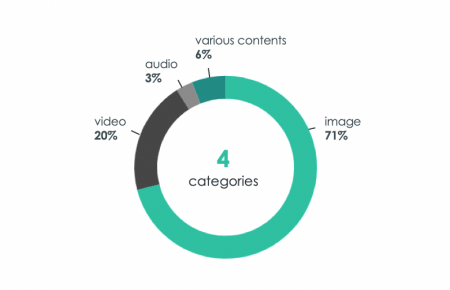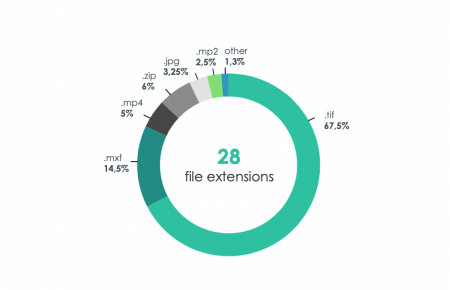Archive system receives +900,000 objects via digital intake
4 Mar 2021Digital files, just like paper sources and other analogue carriers, face an uncertain future if not enough attention is paid to their preservation. And at meemoo we certainly don’t forget born-digital files. Neither did we stand still in 2020 – receiving over 900,000 objects in our archive system via digital intake.
Our content partners face all kinds of challenges in terms of sustainable preservation, for example with regard to the volume of content and infrastructure required. Fortunately, they can always count on us for advice and action. And they’ve taken advantage of it: almost 1 million objects found their way to the meemoo archive system in 2020!
To be precise, there were 925,536 new intellectual entities – files or ‘file packages’ (a series of related objects).

How do these objects flow in, and where do they come from?
The +900,000 objects come from both a continuous digital intake and a digital intake in batches. With a 'continuous intake', the content partner uses an automated flow to perform their own regular upload to the meemoo archive system. These partners are mainly broadcasters with a direct connection to our system. With a batch intake project, the content partner transfers their digital collection over to us in phases.
In 2020, we received digital collections from 39 different content partners. Various national and regional broadcasters uploaded the majority of files via continuous intake, but the largest single contribution came in the form of plant scans from Meise Botanic Garden. The ‘Land van Dendermonde’ heritage body and the Flemish Parliament also provided hefty additions.
A closer look at the digital intake distribution in 2020
The 925,536 intellectual entities together amounted to some 2,041 TB of content – slightly over 2 PB. To give you a better idea of how much this is: 2 PB is more than 11,000 hours of TV!
Most of these received files consisted of images, with a large number of videos also finding their way into our system. In terms of volume, the videos carried the most weight – accounting for some 96% of the total volume. Images only made up slightly more than 3% of the total volume, and audio just 0.4%. Around 0.3% of the total volume was comprised of other types of files.

These figures reflect the distribution of file extensions. The .tif extension was the most common, in 67.5% of cases! This is no great surprise considering we received so many images. Other common extensions indicate more images and videos. A detailed distribution of file extensions appears as follows:

